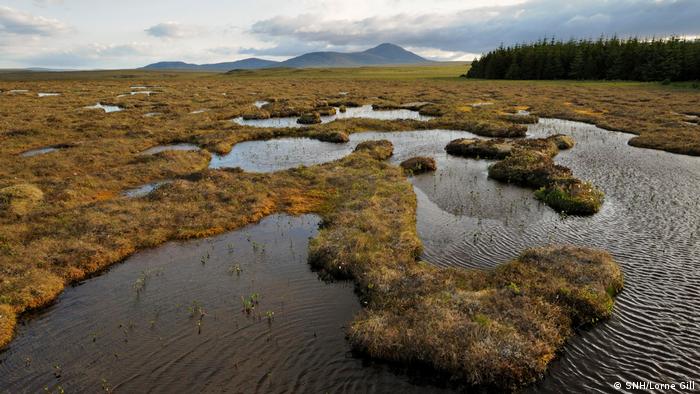Note4Students
From UPSC perspective, the following things are important :
Prelims level: Peatlands
Mains level: Significance of peatlands

Peatlands, which play a crucial role in regulating global climate by acting as carbon sinks, are facing degradation and need to be urgently monitored, according to the FAO.
What are Peatlands?
- Peatlands are a type of wetlands that occur in almost every country on Earth, currently covering 3% of the global land surface.
- The term ‘peatland’ refers to the peat soil and the wetland habitat growing on its surface.
- They are formed due to the accumulation of partially decomposed plant remains over thousands of years under conditions of water-logging.
- In these areas, year-round waterlogged conditions slow the process of plant decomposition to such an extent that dead plants accumulate to form peat.
- Over millennia this material builds up and becomes several metres thick.
Why are peatlands significant?
- Large amounts of carbon, fixed from the atmosphere into plant tissues through photosynthesis, are locked away in peat soils, representing a valuable global carbon store.
- Peatlands are highly significant to global efforts to combat climate change, as well as wider sustainable development goals.
- The protection and restoration of peatlands are vital in the transition towards a low-carbon and circular economy.
1) Better sinks of Carbon
- Damaged peatlands contribute about 10% of greenhouse gas emissions from the land-use sector.
- CO2 emissions from drained peatlands are estimated at 1.3 gigatonnes of CO2 This is equivalent to 5.6% of global anthropogenic CO2 emissions.
- However, at the same time, peatlands are the largest natural terrestrial carbon store. Worldwide, the remaining area of near-natural peatland contains more than 550 gigatonnes of carbon.
- This represented 42% of all soil carbon and exceeds the carbon stored in all other vegetation types, including the world’s forests. This area sequesters 0.37 gigatonnes of CO2 a year.
2) Vital ecosystem services
- By regulating water flows, peatlands help minimize the risk of flooding and drought and prevent seawater intrusion.
- In many parts of the world, peatlands supply food, fibre and other local products that sustain local economies.
- They also preserve important ecological and archaeological information such as pollen records and human artefacts.
- Draining peatlands reduces the quality of drinking water due to pollution from dissolved compounds. Damage to peatlands also results in biodiversity loss.
Other benefits
- Peatlands occur in different climate zones.
- While in a tropical climate, they can occur in mangroves, in Arctic regions, peatlands are dominated by mosses. Some mangrove species are known to develop peatland soils under them.
- Besides climate mitigation, peatlands are important for archaeology, as they maintain pollen, seeds and human remains for a long time in their acidic and water-logged conditions.
- In many countries, pristine peatlands are important for recreation activities. These areas also support livelihood in the form of pastoralism
- The vegetation growing on pristine peatlands provide different kinds of fibres for construction activities and handicrafts.
- Many wetland species produce berries, mushrooms and fruits, often economically important to local communities.
- Peatlands also provide fishing and hunting opportunities. It is also possible to practise paludiculture or wet agriculture on rewetted peatlands.
Various threats

- Their degradation due to drainage, fire, agricultural use and forestry can trigger the release of the stored carbon in a few decades.
- Peatlands contain 30 per cent of the world’s soil carbon. When drained, these emit greenhouse gases, contributing up to one gigatonne of emissions per year through oxidation.
Way forward
- In India, peatlands occupy roughly 320–1,000 square kilometres area.
- To prevent further degradation, these areas should be urgently mapped and monitored.
With inputs from: https://www.iucn.org/resources/issues-briefs/peatlands-and-climate-change
Get an IAS/IPS ranker as your 1: 1 personal mentor for UPSC 2024
